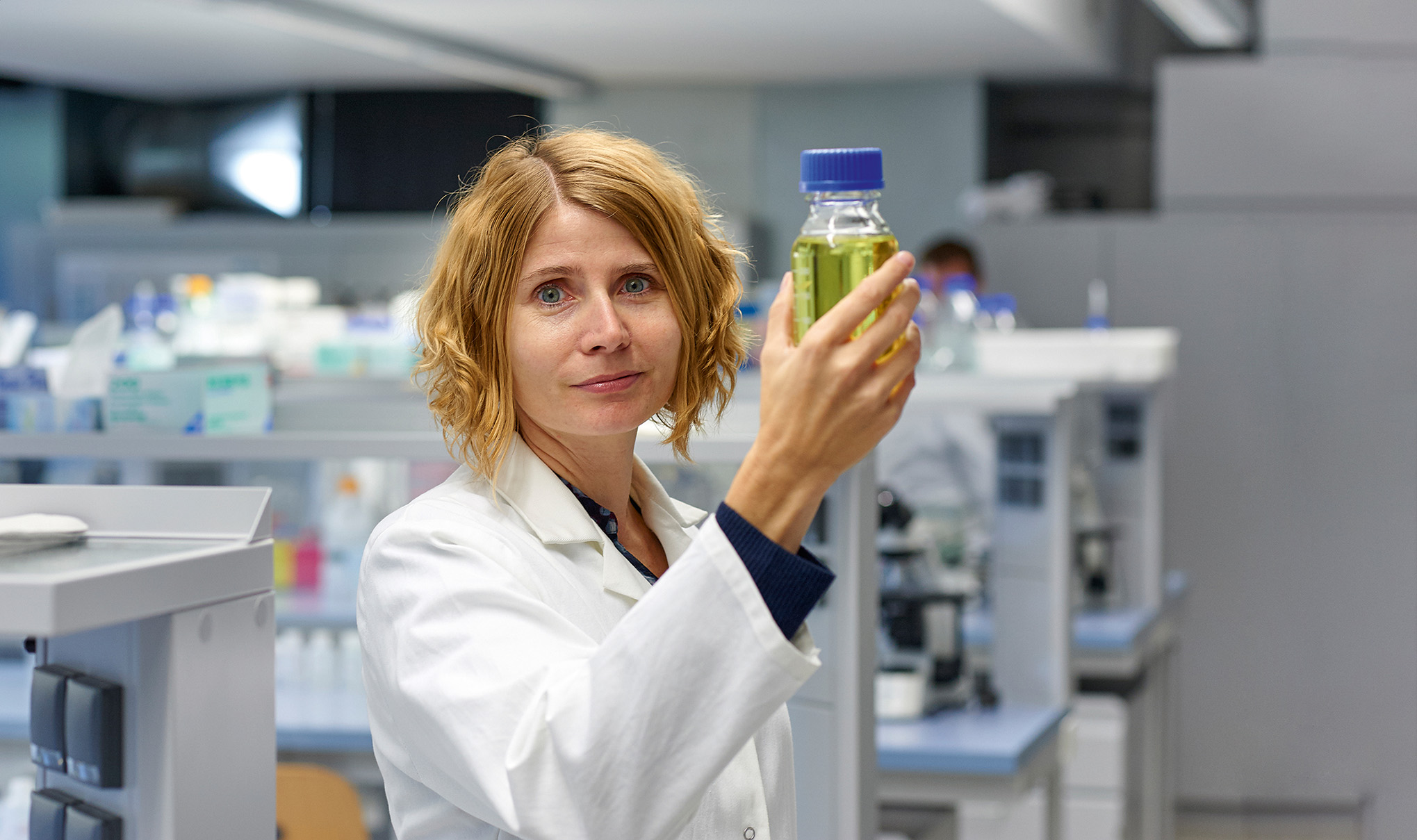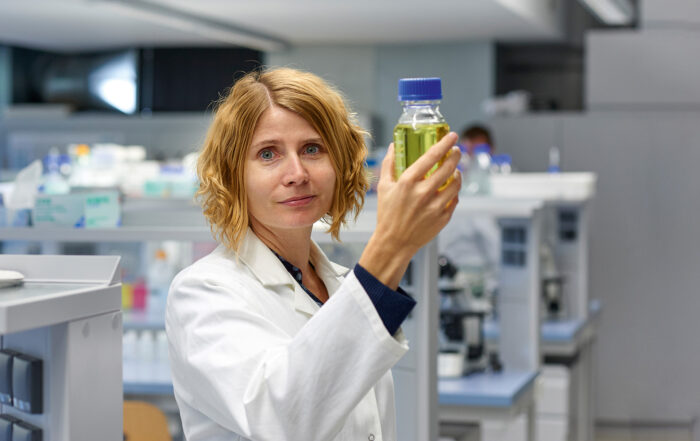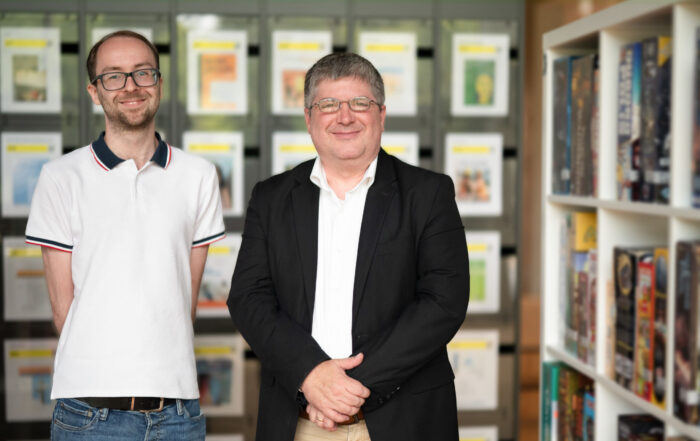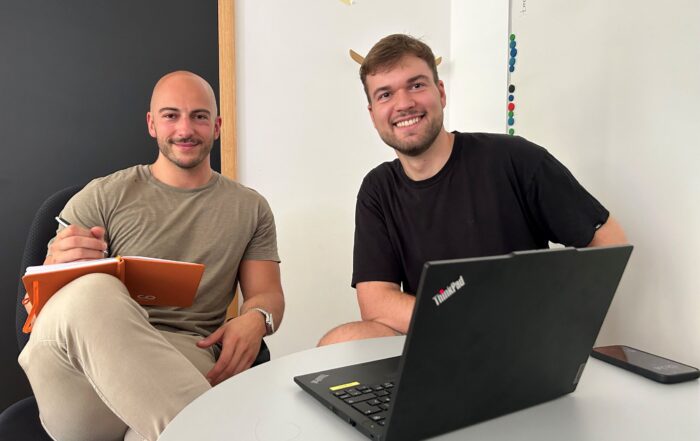17. May '24
In Alzheimer’s disease, proteins accumulate in the brain and damage it.
Prof. Dr. Susanne Aileen Funke from Coburg University of Applied Sciences has found a method to prevent such dangerous protein compounds.
It is applied basic research – still a long way from becoming a drug.
But the research results so far are promising and have aroused great interest.
The Coburg scientist presented them to experts at this year’s Conference on Alzheimer’s and Parkinson’s Diseases (AD/PD) and explained them to the general public on TV Oberfranken’s 4you program.
When a person develops Alzheimer’s disease, something changes in the brain: two of the body’s own proteins begin to clump together in a special way.
The amyloid beta peptide combines with peptides of the same type and is deposited between the nerve cells as plaques.
And in the nerve cells, tau proteins begin to form so-called tangles or fibrils with other tau proteins.
“As a single protein, tau is very important for the body,” explains Prof. Dr. Susanne Aileen Funke from the Faculty of Applied Sciences and Health at Coburg University of Applied Sciences.
“But as soon as it aggregates with itself, it becomes very toxic.”
After some time, the affected nerve cells die.
Alzheimer’s dementia is a neurodegenerative disease.
Those affected lose cognitive abilities.
More and more memories are erased, personalities are slowly destroyed.
Coburg molecular biologist Funke’s working group is researching small protein substances, peptides, which bind to the tau protein.
This prevents tau from aggregating with itself. “It works in the test tube and we have now carried out the first cell culture experiments.”
This is still a long way from becoming a drug: “There are still a few cell culture trials to go and we need cooperation partners for further development.”
It could be years, perhaps decades, before the active ingredients are further developed and tested in the pharmaceutical industry.
What is happening in Alzheimer’s research worldwide
Funke reports on the 18th International Conference on Alzheimer’s and Parkinson’s Diseases (AD/PD), one of the most important European conferences on the subject with 4700 participants from over 70 different countries.
The renowned Alzheimer’s researcher from Coburg University of Applied Sciences gave a lecture there and chaired the corresponding session.
“The atmosphere was different this time, there was a kind of spirit of optimism,” she says.
“The fact is that no new drugs have been approved for a very, very long time.”
Until now, only the symptoms of Alzheimer’s could be treated.
“Now, however, the first therapies that can change the course of the disease have been approved in the USA, for example.”
However, the effect is not as clear as hoped, the drugs are expensive, have side effects and have to be administered at a very early stage of the disease, which is not so easy.
Alzheimer’s is usually only diagnosed when the symptoms become apparent.
By then, however, the disease has already caused a lot of unnoticed damage to the brain, as it begins many years earlier.
“But biomarker research, which helps with early diagnosis, is also making progress,” explains Funke.
Her own research is another important approach: at the Institute for Bioanalytics at Coburg University of Applied Sciences, two D-peptides were found using methods such as the so-called phage display method, which dock at exactly the right places on the tau protein.
D-peptides consist of D-amino acids, which are the spatial mirror image of natural L-amino acids.
They do not occur in nature and are not attacked by the body’s own defense systems as quickly as natural peptides.
The hexapeptide motifs PHF6* (amino acids 275 to 280 of tau, sequence VQIINK) and PHF6 (amino acids 306 to 311 of tau, sequence VQIVYK) are crucial for the dangerous combination of several tau proteins.
Funke’s team found two ideal D-peptides for this purpose: MMD3 binds to PHF6* and ISAD1 to PHF6.
This alters the aggregation of tau proteins.
The Coburg peptides prevent the toxic reaction
“We used biochemical, biophysical and bioinformatic methods to investigate the ability of the D-peptides to bind to tau and alter its fibrillization,” explains Funke.
In addition, initial cell culture experiments have shown that the D-peptides are efficiently taken up by the cells and actually inhibit the toxic reaction of the tau peptides in practice.
“This could be very interesting for the treatment of Alzheimer’s,” says the professor cautiously.
Alzheimer’s is a very complex disease in which the causes and correlations are still not entirely clear.
Moreover, it is not certain that what happens in the test tube and cell culture is the same in the human brain. “There are still many steps to go before MMD3 and ISAD1 can perhaps be developed as therapeutics for early intervention in Alzheimer’s disease.” Funke does not want to raise false hopes: “There can always come a point at which it tips over, at which you realize: it doesn’t work here after all.”
However, a number of other D-peptides have already been shown to cross the blood-brain barrier after oral administration – an important point for a drug to take effect in the brain cells. All tests, all trials, all results have so far been positive. Now the professor is looking for the right partners to drive the topic forward. If a drug is developed from the research, it may take another ten or 15 years. “But it really looks like something could come of it.”
Contribution from TV Oberfranken
Alzheimer’s research at Coburg University of Applied Sciences will also be the subject of the program 4you on TV Oberfranken on Wednesday, May 22: It can be seen on cable at 6.30 pm and on SAT (FrankenPlus) at 7.30 pm.
Afterwards, the report will be available in the TVO media library: http://www.tvo.de/mediathek/kategorie/sendungen/4you/.






